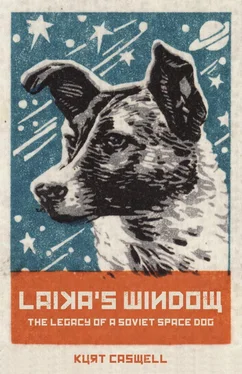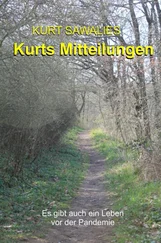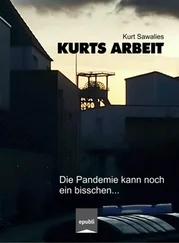While fruit flies have long been part of short-term experiments in space, in 2014 NASA established the Fruit Fly Lab on the ISS to begin long-term experiments. In particular, the lab will study the effect of microgravity on fruit flies, which will help scientists understand such effects on humans. Additionally, NASA says, fruit flies will help us understand “the effects of spaceflight on the immune system, the development cycle (birth, growth, reproduction, aging), and behavior.”
¤
A decade before Laika, the US Air Force at White Sands flew a series of monkeys into space for the Albert Project, which began with the flight of Albert I in 1948 and concluded with Albert VI in 1951. Weighing eight to ten pounds each, all of the Alberts were rhesus monkeys, except for Albert III, who was a cynomolgus monkey. Secured in protective harnesses and loaded into sealed capsules, the monkeys were anesthetized to avoid discomfort during flight. Albert I’s capsule was so cramped that when the monkey was inserted its head had to be pushed down, bending its neck at an acute angle. Before launch, someone wrote on one of the rocket’s fins, “Alas, poor Yorick. I knew him well,” a misquote from Shakespeare’s Hamlet . In the control room, the team reported that no heart rate or respiration registered on their instruments. The monkey likely died of asphyxiation, they concluded, from its bent neck. The rocket went up anyway, carrying a dead monkey, and reached an apex of thirty-seven miles. On the descent, the braking chute shredded at 25,000 feet, and the spacecraft broke apart on impact, leaving a waste of wreckage on the desert floor. Later the team confessed that they were unable to retrieve any data, but they learned something about the V-2 rockets they were working with and about capsule recovery. They would try again.
With each successive Albert flight, the resulting data led to improvements in capsule and braking design and instrumentation, but they were all failures as far as the monkeys were concerned. Albert II died when the braking chute on his spacecraft failed and he slammed into the Earth. The impact carved out a crater ten feet across and five feet deep. Albert III died when his rocket exploded during flight. Albert IV’s braking chute failed, and the capsule crashed. While Albert V flew in a new rocket design, the more reliable and higher-performance Aerobee rocket, again the braking chute failed. The rocket crashed and was lost in the desert. Eleven mice joined the flight of Albert VI, some for testing microgravity and others for testing the effects of radiation exposure in space. Albert VI went up and came down, and the chute system worked. He landed safely back on Earth. The recovery team didn’t arrive for two hours, and, trapped inside the capsule, Albert VI died of heat exhaustion in the New Mexico sun.
On December 3, 1958, newly formed NASA loaded a one-pound squirrel monkey named Gordo onto a Jupiter rocket. Gordo was also known as Old Reliable by the team that trained him because inside his little space capsule, he always fell asleep. Gordo wore a leather-lined plastic helmet and was strapped into a seat molded to his body. The rocket launched, pushing upward into the sky, Gordo enduring as much as a g-force of ten. At an altitude of about 300 miles, Gordo floated in microgravity for more than eight minutes, and on the descent the spacecraft hit 10,000mph. Instruments showed that Gordo survived all this, and in good condition, and if a man had been inside that capsule he would have survived too. The spacecraft splashed down in the Atlantic 1,500 miles downrange, but the recovery team was unable to locate it. After a six-hour search, it became clear that little Gordo would remain out there, forever lost at sea.
By 1959 the Soviets had put dozens of dogs into space (but not into orbit) and recovered them safely. The US had a couple of satellites in orbit, but with the exception of the fruit flies, it had failed every attempt at recovering a biological spaceflight. If the US was going to get a man safely into space before the Soviet Union, it had to get an animal safely into space first. And the US finally did with the flight of Able and Baker. Able was a rhesus monkey born in a pet shop in Independence, Missouri, and Baker was an eleven-ounce squirrel monkey from the jungles of Peru. The pair flew with a host of other biological experiments testing the effects of microgravity and radiation on living systems. According to Colin Burgess and Chris Dubbs in their seminal work, Animals in Space , these other passengers included “corn and mustard seeds, fruit fly larvae, human blood, mould spore and fish eggs, as well as sea-urchin shells and sperm, carefully triggered to produce fertilization during flight.”
Able and Baker flew on May 28, 1959, reaching an apex of 360 miles altitude, where they drifted in microgravity for nine minutes. On the descent, the fantastic speed of the spacecraft subjected these two little monkeys to a crushing 38g. Able’s heart rate went from 140 beats per minute to a peak of 222, and her respiration rate tripled. Baker, the tiny squirrel monkey, experienced a bit of “cardiac inhibition,” reports call it, but her respirations remained normal. The spacecraft came down in the Atlantic, and navy frogmen helped hoist it onto the deck of the USS Kiowa . Able and Baker were unharmed, but not so for one of the recovery crewmen. As he was removing Baker from the capsule, she bit him.
Four days after her flight, Able died suddenly from a reaction to a mild anesthetic given to prepare her for the removal of the implanted ECG electrode. The anesthetic had been used routinely on hundreds of primates without incident. Her body was preserved, and she became part of the collection at the Smithsonian National Air and Space Museum in Washington, DC. Baker fared better, becoming a national celebrity and living a long life in retirement. She enjoyed an annual birthday party to celebrate her achievement and the newest advances in space technology, sometimes complete with a cake topped with bananas and strawberries. She made television appearances, and children wrote her thousands of letters. At the time of her death on November 29, 1984, she was considered the longest living squirrel monkey in captivity. She is buried at the US Space and Rocket Center in Huntsville, Alabama, where visitors sometimes leave bananas in memoriam.
¤
After the Soviet Union and the United States, France was the third nation to put animals into space. As early as 1949, France was at work constructing a launch facility at Hammaguir, a remote site in the Algerian Sahara, not far from its border with Morocco. Algeria was still a French colony in those days, and the location offered a high degree of secrecy as well as a test range free of human populations. From here, the French team sent three rats into space on separate flights—Hector (1960), Castor (1962), and Pollux (1962)—each fitted with an electrode harness surgically implanted in its brain. The plan was to measure brain activity (as well as other vital signs) in microgravity, with the aim of eventual human spaceflight. The rats wore linen flight suits, which allowed them to be suspended on wires inside tubes during flight to protect them from turbulence. Hector returned to Earth alive but was euthanized some six months later for dissection and study. Castor’s flight went off course and landed thirty-seven miles outside the scheduled recovery zone. Seventy-five minutes after liftoff, the recovery helicopter finally located the spacecraft, but Castor was dead, a victim of the impossible Sahara sun. Pollux too was killed when his rocket strayed off course and came down somewhere in the empty desert, never to be found.
But when it comes to rockets, the French are best known for Félicette, the only house cat in the history of the world to fly in space. Félicette was a mostly black cat with white markings: white socks, white shoulders, and a white nose patch running up between her eyes. She had been picked up as a stray off Paris streets, where she had probably lived free on rats and handouts.
Читать дальше












